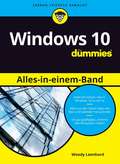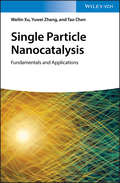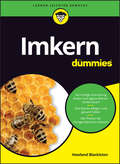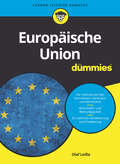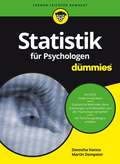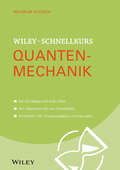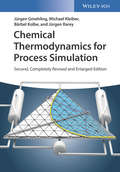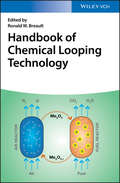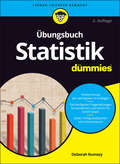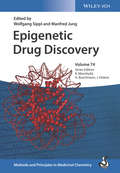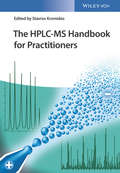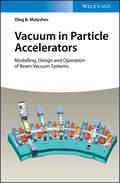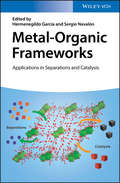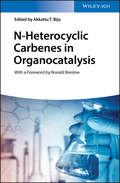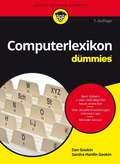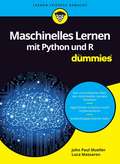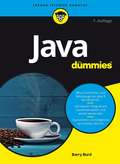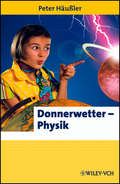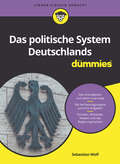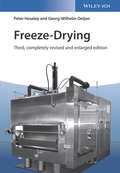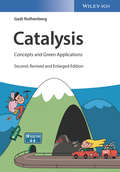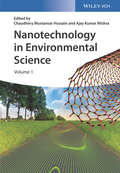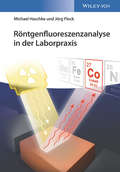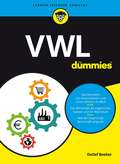- Table View
- List View
Windows 10 Alles-in-einem-Band für Dummies (Für Dummies)
by Woody LeonhardWenn Sie Ihren Computer gerade auf Windows 10 umgestellt oder einen neuen Computer mit Windows 10 ausgepackt haben und ein zuverlässiges, umfassendes und verständliches Handbuch brauchen, dann ist dieses Buch genau richtig für Sie. Das Buch bahnt Ihnen den Weg durch das Fachkauderwelsch und deckt alles ab, was Power-User wissen müssen, inklusive der Navigation im Startmenü, des Sicherheitsmanagements und der Personalisierung der Windows-Funktionen. Sie erfahren, wie Sie Benutzerkonten für mehrere Nutzer einrichten, wie Sie ein Heimgruppennetzwerk aufbauen, in dem Sie Geräte teilen können, wie Sie maximalen Nutzen aus den Windows-Apps ziehen und wie Sie mit den üblichen Windows 10-Problemen fertig werden. Egal ob Sie Windows 10 beruflich oder privat nutzen, dieses Handbuch macht Ihnen den Umgang mit dem Computer leicht.
Single Particle Nanocatalysis: Fundamentals and Applications
by Weilin Xu Yuwei Zhang Tao ChenIntroduces the detailed basis and recent development of single molecule/particle nanocatalysis based on single molecule techniques This unique book introduces and summarizes the recent development of single molecule/particle nanocatalysis to provide both comprehensive coverage of fundamentals for different methods now in widespread use and the extensive applications in different catalytic systems. Chapters are mainly based on different detection methods, including single molecule fluorescence microscopy, surface plasmon resonance spectroscopy, X-ray microscopy, and surface enhanced Raman spectroscopy. The book also includes numerous basic principles of different methods and application examples and features illustrations that help clarify presentations. Single Particle Nanocatalysis: Fundamentals and Applications starts with the history and development of single molecule techniques for nanocatalysis. It then shows readers how single molecule fluorescence microscopy (SMFM) reveals catalytic kinetics and dynamics of individual nanocatalysts. Next, it examines traditional SMFM-based single molecule nanocatalysis without super-resolution (SR) imaging, before moving on to the topic of SMFM-based SR imaging in single molecule nanocatalysis. Following chapters cover scanning electrochemical microscopy for single particle nanocatalysis; surface plasmon resonance spectroscopy for single particle nanocatalysis/reactions; X-ray-based microscopy of single-particle nanocatalysis; and surface-enhanced Raman spectroscopy for single particle nanocatalysis. The book finishes by introducing some less-practiced techniques for single particle nanocatalysis/electrochemistry. -Presents a systematical and complete introduction to the subject of single particle nanocatalysis?covering all of its fundamentals and applications -Helps readers fully understand the basis, role, and recent development of single molecule nanocatalysis -Teaches researchers how to gain new knowledge to successfully conduct their own studies within this rapidly increasing new area of research Single Particle Nanocatalysis: Fundamentals and Applications is an excellent reference book for experts in this area as well as for general researchers who want to learn how to study nanocatalysis at single molecule/particle level.
Imkern für Dummies (Für Dummies)
by Howland BlackistonSie möchten Ihre eigenen Bienen halten und selbst leckeren Honig produzieren? Kein Problem! "Imkern für Dummies" führt Sie Schritt für Schritt durch alle Phasen der Honigproduktion: von der Auswahl der richtigen Ausrüstung bis zur Ernte und Vermarktung Ihres eigenen Honigs. Sie erfahren alles, was Sie über die Biologie, Züchtung und Pflege Ihres Bienenvolkes wissen müssen, wie Sie Schädlinge bekämpfen und sich Ihren Bienen nähern, ohne gestochen zu werden. So können Sie vielleicht schon bald Ihren eigenen Honig genießen.
Europäische Union für Dummies (Für Dummies)
by Olaf LeißeDie Europäische Union beeinflusst das Leben aller Menschen - ob es Studierende der Politischen Wissenschaften sind, die dieses Pflichtmodul bestehen müssen, oder der Normalbürger, der sich fragt, wie sich die Geldpolitik der Europäischen Zentralbank wohl auf seine Ersparnisse auswirkt. Studierenden oder Sparern gemein ist das Staunen über die Vielfalt der europäischen Organisationen und deren Möglichkeit zur Gestaltung von Politik. Olaf Leiße schafft Klarheit. Leicht verständlich erläutert er die Aufgaben und Funktionen der großen Organisationen wie Europäischem Rat, Europäischer Kommission, Europäischem Parlament und Europäischem Gerichtshof und zeigt, wie sie die Wirtschafts- und Währungspolitik, die Wettbewerbs- und Förderpolitik, die Außen- und Sicherheitspolitik, die Landwirtschafts- und Umweltpolitik und die Bildungspolitik für die 500 Millionen Menschen der 28 Länder gestalten, die Mitglieder der Europäischen Union sind. Nach der Lektüre dieses Buches werden Ihnen viele Entscheidungen in dieser großen Gemeinschaft klarer.
Statistik für Psychologen für Dummies (Für Dummies)
by Donncha Hanna Martin DempsterWer sich mit Psychologie beschäftigen will, muss sich meist auch mit Statistik beschäftigen und das auch noch recht umfassend. Wenn Statistik nicht so Ihr Thema ist, dann ist dies das richtige Buch für Sie. Donncha Hanna und Martin Dempster erklären Ihnen, was Sie über Regression, Korrelation und ANOVA wissen sollten. Sie erfahren, was Sie über Wahrscheinlichkeit, Deduktion und Hypothesentests wissen sollten und vieles mehr. Außerdem erhalten Sie eine kurze Einführung in SPSS und lernen die für Sie wichtigen Funktionen dieses umfangreichen Programms kennen. So ist dieses Buch ein angenehmer Einstieg für alle, die sich nicht wirklich auf Statistik freuen.
Wiley-Schnellkurs Quantenmechanik (Wiley Schnellkurs)
by Wilhelm KulischQuantenmechanik: Der Begriff ist bekannt, aber was verbirgt sich konkret dahinter? Wilhelm Kulisch erklärt Ihnen kurz und knapp das Wichtigste zu diesem Thema. Er erläutert Grundlagen zu Operatoren, Wellenfunktionen, Eigenwerten, Eigenvektoren und auch die Schrödingergleichung wird hier besprochen. Dann fährt der Autor mit Potentialbarrieren, Drehimpulsen, der Unschärferelation und vielem mehr fort. Zum Abschluss des Buches gibt er Ihnen noch einen kurzen Einblick in praktische Anwendungen der Quantenmechanik. Zahlreiche Übungsaufgaben mit Lösungen helfen Ihnen, Ihr Wissen zu testen und zu festigen.
Chemical Thermodynamics for Process Simulation
by Jürgen Gmehling Michael Kleiber Bärbel Kolbe Jürgen RareyThe only textbook that applies thermodynamics to real-world process engineering problems This must-read for advanced students and professionals alike is the first book to demonstrate how chemical thermodynamics work in the real world by applying them to actual engineering examples. It also discusses the advantages and disadvantages of the particular models and procedures, and explains the most important models that are applied in process industry. All the topics are illustrated with examples that are closely related to practical process simulation problems. At the end of each chapter, additional calculation examples are given to enable readers to extend their comprehension. Chemical Thermodynamics for Process Simulation instructs on the behavior of fluids for pure fluids, describing the main types of equations of state and their abilities. It discusses the various quantities of interest in process simulation, their correlation, and prediction in detail. Chapters look at the important terms for the description of the thermodynamics of mixtures; the most important models and routes for phase equilibrium calculation; models which are applicable to a wide variety of non-electrolyte systems; membrane processes; polymer thermodynamics; enthalpy of reaction; chemical equilibria, and more. -Explains thermodynamic fundamentals used in process simulation with solved examples -Includes new chapters about modern measurement techniques, retrograde condensation, and simultaneous description of chemical equilibrium -Comprises numerous solved examples, which simplify the understanding of the often complex calculation procedures, and discusses advantages and disadvantages of models and procedures -Includes estimation methods for thermophysical properties and phase equilibria thermodynamics of alternative separation processes -Supplemented with MathCAD-sheets and DDBST programs for readers to reproduce the examples Chemical Thermodynamics for Process Simulation is an ideal resource for those working in the fields of process development, process synthesis, or process optimization, and an excellent book for students in the engineering sciences.
Chemical Thermodynamics for Process Simulation
by Jürgen Gmehling Michael Kleiber Bärbel Kolbe Jürgen RareyThe only textbook that applies thermodynamics to real-world process engineering problems This must-read for advanced students and professionals alike is the first book to demonstrate how chemical thermodynamics work in the real world by applying them to actual engineering examples. It also discusses the advantages and disadvantages of the particular models and procedures, and explains the most important models that are applied in process industry. All the topics are illustrated with examples that are closely related to practical process simulation problems. At the end of each chapter, additional calculation examples are given to enable readers to extend their comprehension. Chemical Thermodynamics for Process Simulation instructs on the behavior of fluids for pure fluids, describing the main types of equations of state and their abilities. It discusses the various quantities of interest in process simulation, their correlation, and prediction in detail. Chapters look at the important terms for the description of the thermodynamics of mixtures; the most important models and routes for phase equilibrium calculation; models which are applicable to a wide variety of non-electrolyte systems; membrane processes; polymer thermodynamics; enthalpy of reaction; chemical equilibria, and more. -Explains thermodynamic fundamentals used in process simulation with solved examples -Includes new chapters about modern measurement techniques, retrograde condensation, and simultaneous description of chemical equilibrium -Comprises numerous solved examples, which simplify the understanding of the often complex calculation procedures, and discusses advantages and disadvantages of models and procedures -Includes estimation methods for thermophysical properties and phase equilibria thermodynamics of alternative separation processes -Supplemented with MathCAD-sheets and DDBST programs for readers to reproduce the examples Chemical Thermodynamics for Process Simulation is an ideal resource for those working in the fields of process development, process synthesis, or process optimization, and an excellent book for students in the engineering sciences.
Handbook of Chemical Looping Technology
by Ronald W. BreaultThis comprehensive and up-to-date handbook on this highly topical field, covering everything from new process concepts to commercial applications. Describing novel developments as well as established methods, the authors start with the evaluation of different oxygen carriers and subsequently illuminate various technological concepts for the energy conversion process. They then go on to discuss the potential for commercial applications in gaseous, coal, and fuel combustion processes in industry. The result is an invaluable source for every scientist in the field, from inorganic chemists in academia to chemical engineers in industry.
Übungsbuch Statistik für Dummies (Für Dummies)
by Deborah J. RumseyHaben Sie Probleme mit Statistik und sehen weder Anfang noch Ende? Da hilft nur üben, üben, üben. Aber keine Sorge! Dieses Buch zeigt Ihnen mit vielen Beispielen und Schritt-für-Schritt-Lösungswegen, wie Sie verschiedene Aufgabenstellungen richtig angehen. Von arithmetischem Mittel über Normalverteilung und Wahrscheinlichkeitsrechnung bis Konfidenzintervall und zentraler Grenzwertsatz sind alle wichtigen Themengebiete vertreten. Dank einer kurzen Wiederholung der Grundlagen und Hunderten Übungen können Sie der Statistik schon bald furchtlos gegenübertreten. Viel Spaß beim Üben!
Epigenetic Drug Discovery (Methods and Principles in Medicinal Chemistry)
by Raimund Mannhold Jörg Holenz Helmut Buschmann Wolfgang Sippl Manfred JungThis broad view of epigenetic approaches in drug discovery combines methods and strategies with individual targets, including new and largely unexplored ones such as sirtuins and methyl-lysine reader proteins. Presented in three parts - Introduction to Epigenetics, General Aspects and Methodologies, and Epigenetic Target Classes - it covers everything any drug researcher would need in order to know about targeting epigenetic mechanisms of disease. Epigenetic Drug Discovery is an important resource for medicinal chemists, pharmaceutical researchers, biochemists, molecular biologists, and molecular geneticists.
The HPLC-MS Handbook for Practitioners
by Stavros KromidasFilling the gap for an expert text dealing exclusively with the practical aspects of HPLC-MS coupling, this concise, compact, and clear book provides detailed information to enable users to employ the method most efficiently. Following an overview of the current state of HPLC-MS and its instrumentation, the text goes on to discuss all relevant aspects of method development. A chapter on tips and tricks is followed by user reports on the advantages - and pitfalls - of applying the method in real-life scenarios. The whole is rounded off by a look at future developments by renowned manufacturers.
Vacuum in Particle Accelerators: Modelling, Design and Operation of Beam Vacuum Systems
by Oleg B. MalyshevA unique guide on how to model and make the best vacuum chambers Vacuum in Particle Accelerators offers a comprehensive overview of ultra-high vacuum systems that are used in charge particle accelerators. The book?s contributors ? noted experts in the field ? also highlight the design and modeling of vacuum particle accelerators. The book reviews vacuum requirements, identifies sources of gas in vacuum chambers and explores methods of removing them. In addition, Vacuum in Particle Accelerators offers an in-depth explanation of the control of the beam and the beam aperture. In the final part of the book, the focus is on the modelling approaches for vacuum chambers under various operating conditions. This important guide: -Offers a review of vacuum systems in charge particle accelerators -Contains contributions from an international panel of noted experts in the field -Highlights the systems, modelling, and design of vacuum particle accelerators -Includes information on vacuum requirements, beam-gas interactions, cryogenic temperatures, ion induced pressure instability, heavy ion machines -Presents the most up-to-date information on the topic for scientists and engineers Written for vacuum physicists, vacuum engineers, plasma physicists, materials scientists, and engineering scientists, Vacuum Particle Accelerators is an essential reference offering an in-depth exploration of vacuum systems and the modelling and design of charged particle accelerators.
Metal-Organic Frameworks: Applications in Separations and Catalysis
by Hermenegildo García Sergio NavalónFocusing on applications in separation, adsorption and catalysis, this handbook underlines the importance of this hot and exciting topic. It provides an excellent insight into the synthesis and modification of MOFs, their synthesis on an industrial scale, their use as CO2 and chemical warfare adsorbers, and the role of defects in catalysis. In addition, the authors treat such new aspects as biocatalysis and applications in photocatalysis and optoelectronic devices.
N-Heterocyclic Carbenes in Organocatalysis
by Akkattu T. Biju Ronald BreslowSummarizing the emerging field of N-heterocyclic carbenes used in organocatalysis, this is an excellent overview of the synthesis and applications of NHCs focusing on carbon-carbon and carbon-heteroatom bond formation. Alongside comprehensive coverage of the synthesis, characteristics and applications, this handbook and ready reference also includes chapters on NHCs for polymerization reactions and natural product synthesis.
Computerlexikon für Dummies (Für Dummies)
by Dan Gookin Sandra Hardin GookinKennen Sie das? Sie unterhalten sich mit einem Fachmann über Computer oder Smartphones und verstehen nur Bahnhof? In "Computerlexikon für Dummies" finden Sie über 2500 Begriffe aus der Computerwelt, leicht verständlich erklärt und auf den Punkt gebracht, von A wie Abbrechen über M wie Multitouch bis zu Z wie Zylinder (eines Festplattenlaufwerks). Die 7., überarbeitete und aktualisierte Auflage enthält zudem viele neue Begriffe, die die Entwicklung der letzten Jahre mit sich gebracht hat - zum Beispiel zum Datenschutz, zu Windows 10 und zu Trends wie Pokemon Go und Fitness Tracker.
Maschinelles Lernen mit Python und R für Dummies (Für Dummies)
by John Paul Mueller Luca MassaronMaschinelles Lernen ist aufregend: Mit schnellen Prozessoren und großen Speichern können Computer aus Erfahrungen lernen, künstliche Intelligenz kommt wieder in Reichweite. Mit diesem Buch verstehen Sie, was maschinelles Lernen bedeutet, für welche Probleme es sich eignet, welche neuen Herangehensweisen damit möglich sind und wie Sie mit Python, R und speziellen Werkzeugen maschinelles Lernen implementieren. Sie brauchen dafür keine jahrelange Erfahrung als Programmierer und kein Mathematikstudium. Die praktische Anwendung maschinellen Lernens steht in diesem Buch im Vordergrund. Spielen Sie mit den Tools und haben Sie Spaß dabei! Lernen Sie Fakten und Mythen zum maschinellen Lernen zu unterscheiden.
Java für Dummies (FÜr Dummies)
by Barry BurdJava für Dummies ist gleichzeitig ein Lehrbuch und ein unverzichtbares Nachschlagewerk für alle Java-Programmierer. Basiswissen zur objektorientierten Programmierung wird genauso vermittelt wie das Prinzip der Wiederverwendbarkeit von Programmbausteinen und allgemeine Grundlagen der Java-Programmierung.
Donnerwetter - Physik!
by Peter HäußlerJetzt als Sonderausgabe! Auf einer Geburtstagsparty werden Jugendlichen sieben Zauberkunststücke vorgeführt. Sieben erstaunliche Phänomene, die Anne und ihre Freunde zunächst vor Rätsel stellen. Doch so nach und nach kommen sie den Tricks auf die Spur. Mit der Unterstützung eines Nachbarn, einem pensionierten Physiker, entwickeln sie dazu physikalische Ideen: Anhand des Gewichts von Schokolade wird die Einheit für die Kraft diskutiert, "Schau mir in die Augen" leitet ein Gespräch über die Bildentstehung ein. Das Beobachten von Zugvögeln ist Aufhänger für den Magnetismus, und ein heftiges Gewitter gibt Anlass zum Nachdenken über die Elektrizität. Auch die von Physikern entwickelten Vorstellungen zu Quarks, Weißen Zwergen und Schwarzen Löchern kommen zur Sprache. Peter Häußler ist Professor für die Didaktik der Physik an der Universität Kiel und versteht es, lebendig und spannend zu schreiben. Über die Grundlagen der Physik hinaus erfährt der Leser auch etwas über ihre Erkenntnismethoden und den Unterschied zwischen Alltags- und Wissenschaftssprache. Alle Versuche sind genau beschrieben und können ohne großen Aufwand mit alltäglichen Gegenständen nachvollzogen werden. Das Buch ermutigt Jugendliche wie Erwachsene sich (wieder einmal) mit Physik zu beschäftigen, Kenntnisse aufzufrischen oder zu erweitern.
Das politische System Deutschlands für Dummies (Für Dummies)
by Sebastian WolfDas politische System der Bundesrepublik ist nicht ganz einfach zu durchschauen. Was hat es mit der Bundesversammlung und der Wahl des Bundespräsidenten auf sich? Wie kommen bei einer Bundestagswahl die Überhangmandate zustande? Was macht ein Alterspräsident im Landtag? Welche Aufgaben hat das Bundesverfassungsgericht? Welchen Einfluss haben Verbände oder die Medien auf die Gestaltung der Politik? Nicht nur interessierte Laien stellen sich diese Fragen (meist vor einer Wahl), die in diesem Buch beantwortet werden. Wer in der Schule PoWi beziehungsweise Gemeinschaftskunde als Leistungskurs belegt hat oder in den ersten Semestern Politikwissenschaft im Haupt- oder Nebenfach studiert, muss unter anderem wissen, welche Aufgaben die Verfassungsorgane haben. Und da Deutschland fest in internationale Beziehungen eingebunden ist, geht der Autor auch auf europäische und internationale Einflüsse ein.
Freeze-Drying
by Peter Haseley Georg-Wilhelm OetjenThis completely updated and enlarged third edition of the classic text adopts a practical approach to describe the fundamentals of freeze-drying, backed by many explanatory examples. Following an introduction to the fundamentals, the book goes on to discuss process and plant automation as well as methods to transfer pilot plant qualifications and process data to production. An entire section is devoted to a large range of different pharmaceutical, biological, and medical products. New to this edition are chapters on antibodies, freeze-dry microscopy, TEMPRIS, microwave freeze-drying, spray freeze-drying, and PAT. Their many years of experience in freeze-drying enable the authors to supply valuable criteria for the selection of laboratory, pilot and production plants, discussing the advantages, drawbacks and limitations of different plant designs. Alongside guidelines for the evaluation and qualification of plants and processes, the author also includes a troubleshooting section.
Catalysis: Concepts and Green Applications (Second, revised and enlarged edition)
by Gadi RothenbergAfter the great success now in its 2nd Edition: This textbook covers all aspects of catalysis, including computational methods, industrial applications and green chemistry
Nanotechnology in Environmental Science
by Ajay Kumar Mishra Chaudhery Mustansar HussainAn overview of the current state of nanotechnology-based devices with applications in environmental science, focusing on nanomaterials and polymer nanocomposites. The handbook pays special attention to those nanotechnology-based approaches that promise easier, faster and cheaper processes in environmental monitoring and remediation. Furthermore, it presents up-to-date information on the economics, toxicity and regulations related to nanotechnology in detail. The book closes with a look at the role of nanotechnology for a green and sustainable future. With its coverage of existing and soon-to-be-realized devices this is an indispensable reference for both academic and corporate R&D.
Röntgenfluoreszenzanalyse in der Laborpraxis
by Michael Haschke Jörg FlockBereits seit vielen Jahren wird die Röntgenfluoreszenzenzanalyse eingesetzt für die Untersuchung kompakter, homogener Proben wie Metallen oder Gläsern, aber auch für die Analyse pulverförmiger Proben wie etwa geologische Proben, Zement und Eisenlegierungen. In den letzten Jahren haben sich viele neue Applikationsgebiete für diese Methode eröffnet. Im vorliegenden Buch erfolgt zunächst eine kurze Darstellung der physikalischen Zusammenhänge bei der Erzeugung und Wechselwirkung von Röntgenstrahlung in der zu untersuchenden Probe. Dann werden die verschiedenen Methoden der Probenpräparation in Abhängigkeit von der Qualität des Ausgangsmaterials sowie von der analytischen Zielstellung vorgestellt. Nach einer kurzen Beschreibung der verschiedenen Gerätetypen, die in der Röntgenanalytik existieren, und deren Leistungsfähigkeit wird auf die Auswahl optimaler Messbedingungen eingegangen sowie die Aufbereitung der Messdaten erläutert, angefangen von deren Korrektur über die Bestimmung der Intensitäten bis hin zum endgültigen Analysenergebnis, auch unter Berücksichtigung, Vermeidung und Korrektur möglicher auftretender Fehler. Nach einer kurzen Beschreibung der Gefahren einer Schädigung durch Röntgenstrahlung und der Anforderungen zu denen Verhinderung werden die verschiedenen Applikationen der Röntgenfluoreszenz beschrieben.
VWL für Dummies (Für Dummies)
by Detlef BeekerAngebot und Nachfrage ist Ihnen sicherlich ein Begriff, aber was hat die Volkswirtschaftslehre sonst noch zu bieten? Studierende finden in diesem Buch die wichtigsten Studieninhalte. Professor Detlef Beeker stellt leicht verständlich die Mikroökonomie dar, die sich mit den wirtschaftlichen Entscheidungen von Konsumenten und Unternehmen befasst, und die Makroökonomie, in der gesamtwirtschaftliche Zusammenhänge im Mittelpunkt stehen. Natürlich bleibt auch das Thema Wirtschaftspolitik nicht außen vor. Damit Sie von Arbeitslosigkeit bis Zentralbank die wichtigsten volkswirtschaftlichen Themen verstehen.
